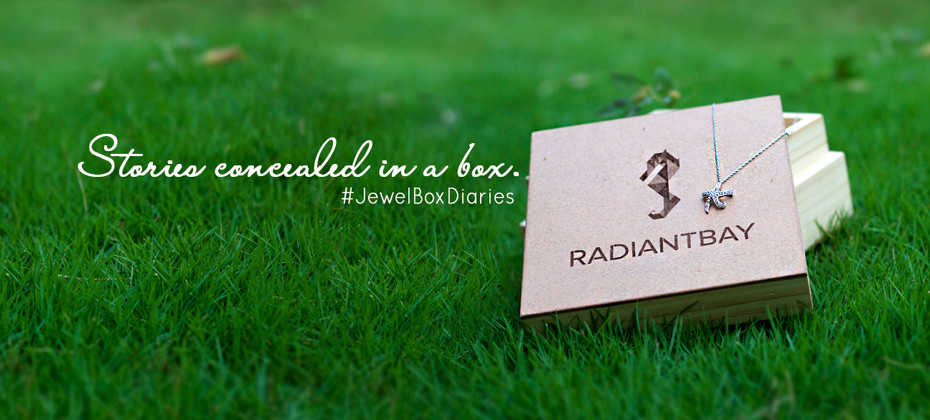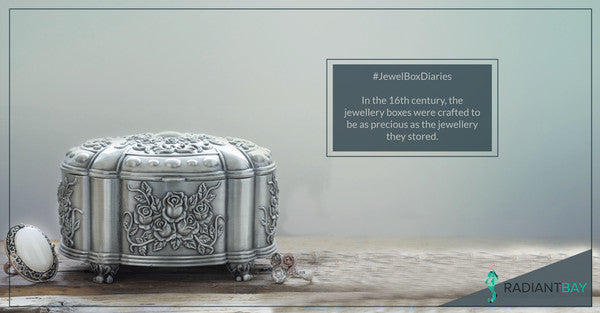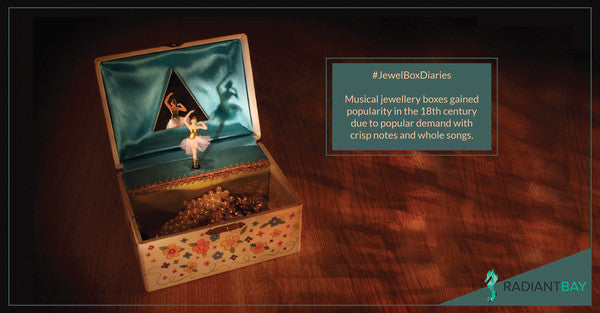
Jewellery has been around since the Stone Age, after Neanderthals could cut, buff and mould whatever material they found fancy into precious adornments. But just because jewels have been around for over 75,000 years doesn’t mean that the jewellery box is just as old.
Any reference to the first jewellery box ever made can be debateable, as it is not easily available. But, we can assume that as humans have evolved, not only did precious jewellery come into existence but so did the tools and skill to make jewellery boxes.
Regardless of who first invented these boxes, through history the jewellery box or casket, were always treated like miniature treasure chests. Originally commissioned by royals and aristocrats, the jewellery box was designed, and handcrafted by skilled artisans, using silver, gold and sometimes even ivory.
A lot of time and effort was put into making these keepers of history, crafted to perfection, making sure that they were even more valuable than the jewellery that went inside. However through the passing of time, the sentiments and value behind these boxes have been lost; becoming more of a fashion purchase than a valuable heirloom. To rediscover the passion and fascinating history that surrounds these mini treasure chests, here is a throwback to the jewellery box.

16th century royal, Henry Tudor had a knack for woo potential love interests with gifts. From the presentation to the big reveal, craftsmen would work tirelessly, not only on the jewellery but the box in which it came; focusing on every detail to capture the king’s desires.
Most often than not, the box, much like the Nurembourg jewellery box, was made from elaborately worked metal. Jewel-encrusted boxes with velvet or leather-lined interiors would be used as airtight containers that would shield the gems from the dirt and grime of the palace.

In the 18th century, during the reign of Queen Victoria of England, a box closely related to the casket was introduced- the trinket box. As it was in vogue to have curiosities, the Victorians embraced these petite storage boxes, decorated with figures of children, flowers etc, displayed on their mantels.
Miniature replicas of household furniture, like cabinets and bureaus, were also produced later during this period; not to be confused with jewellery armories like that of Marie Antoinette, which actually were large enough to hold substantial amounts of jewellery.

Later in the 19th century, musical jewellery boxes emerged as the newest rage. Originally invented as a music box by a Swiss watchmaker, Antoine Favre in 1502, the music box evolved and was reinvented to hold jewellery by another Swiss watchmaker, Charles Reuge in 1865.
Initially jewellery boxes were made only for royals and high society, but because of the mass production during the Industrial Revolution, jewellery boxes became accessible to the middle class as well.

Now, it seems like the jewellery box comes in various shapes and sizes, and may have lost its value as a treasure chest. But it is time that we change how we perceive them, bring them out from the corners of our closets, and let them have their moment as keepers of history once again.
We want you to get your jewellery boxes out from the corners of your wardrobes, and have their day in the sun. All your treasures from Radiant Bay come in our signature wooden boxes. Head to Radiant Bay and get your very own treasure chest TODAY!
The Orna-mentals is a blog by Radiant Bay with a mission to bring you expert opinions, news, ideas and inspirations about fashion, jewellery and all its nuances. Register with us for all the BEST deals & NEW arrivals at Radiant Bay.

